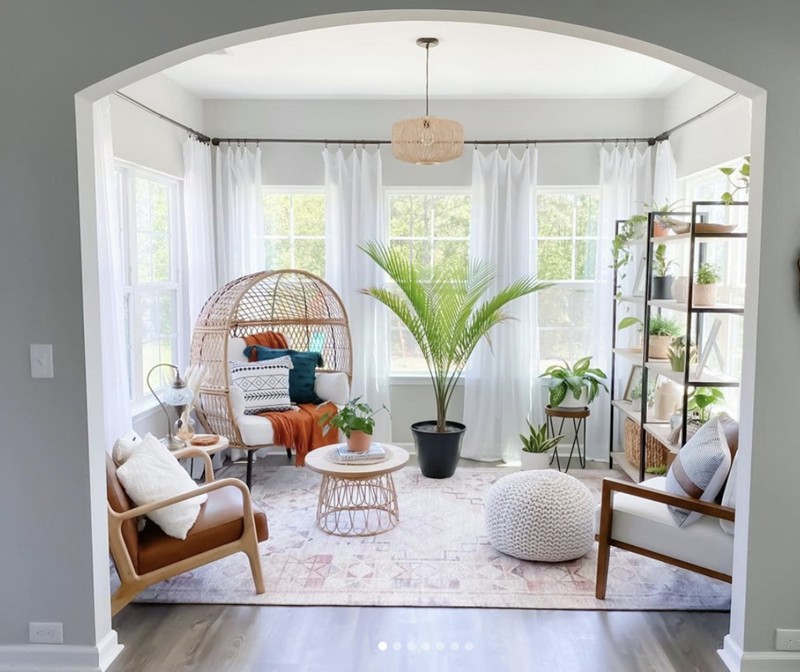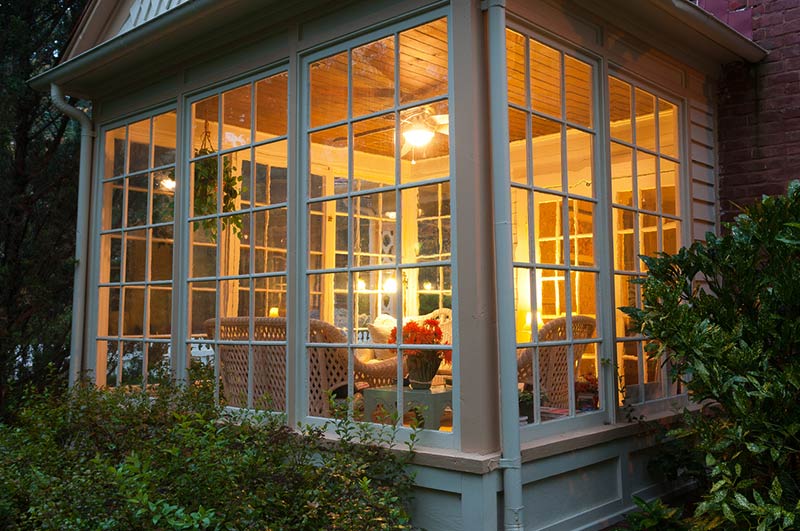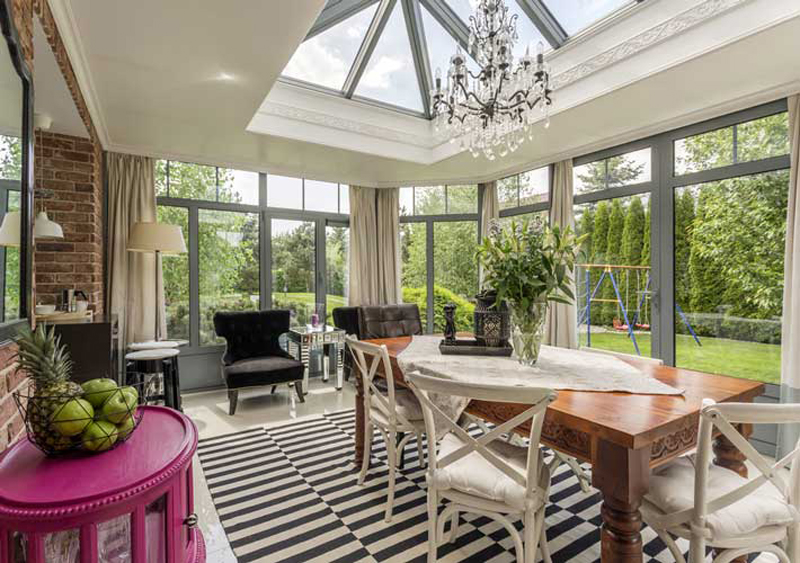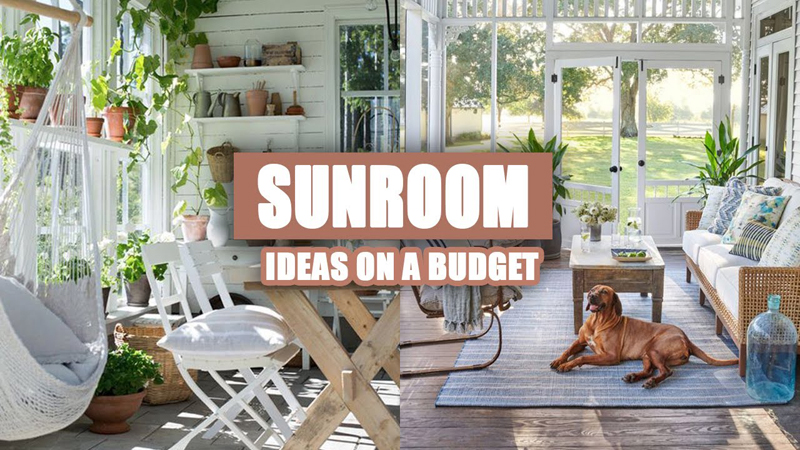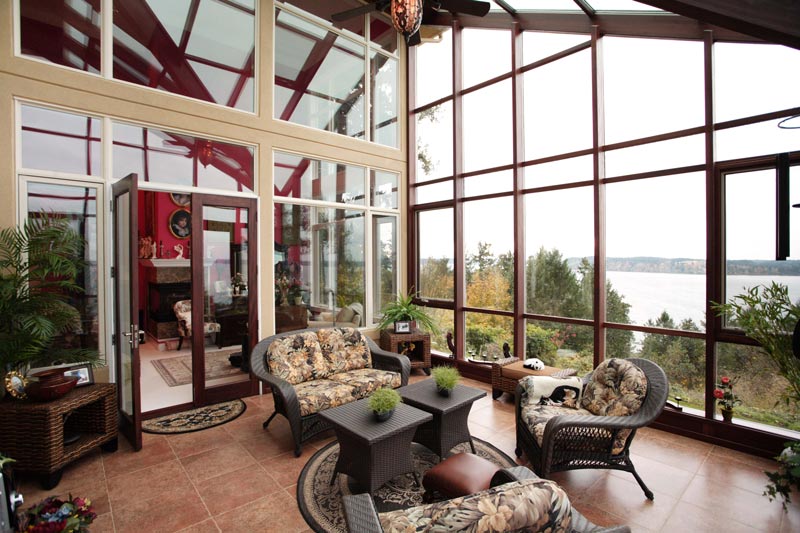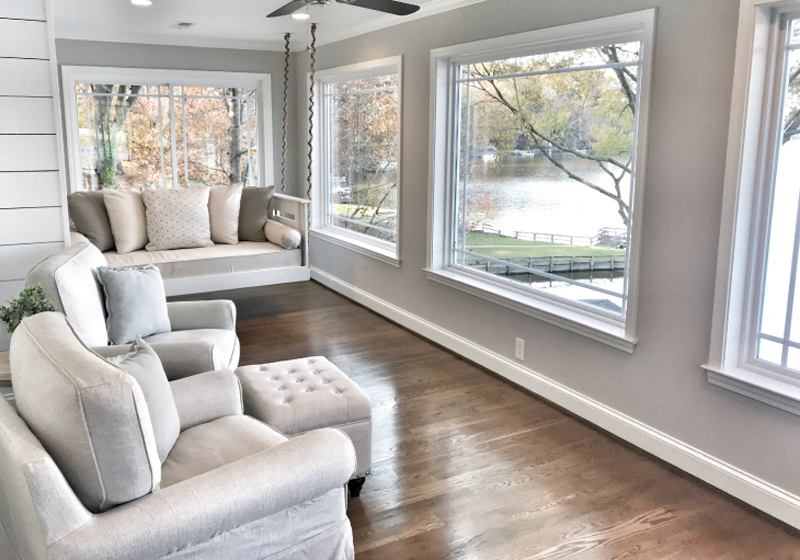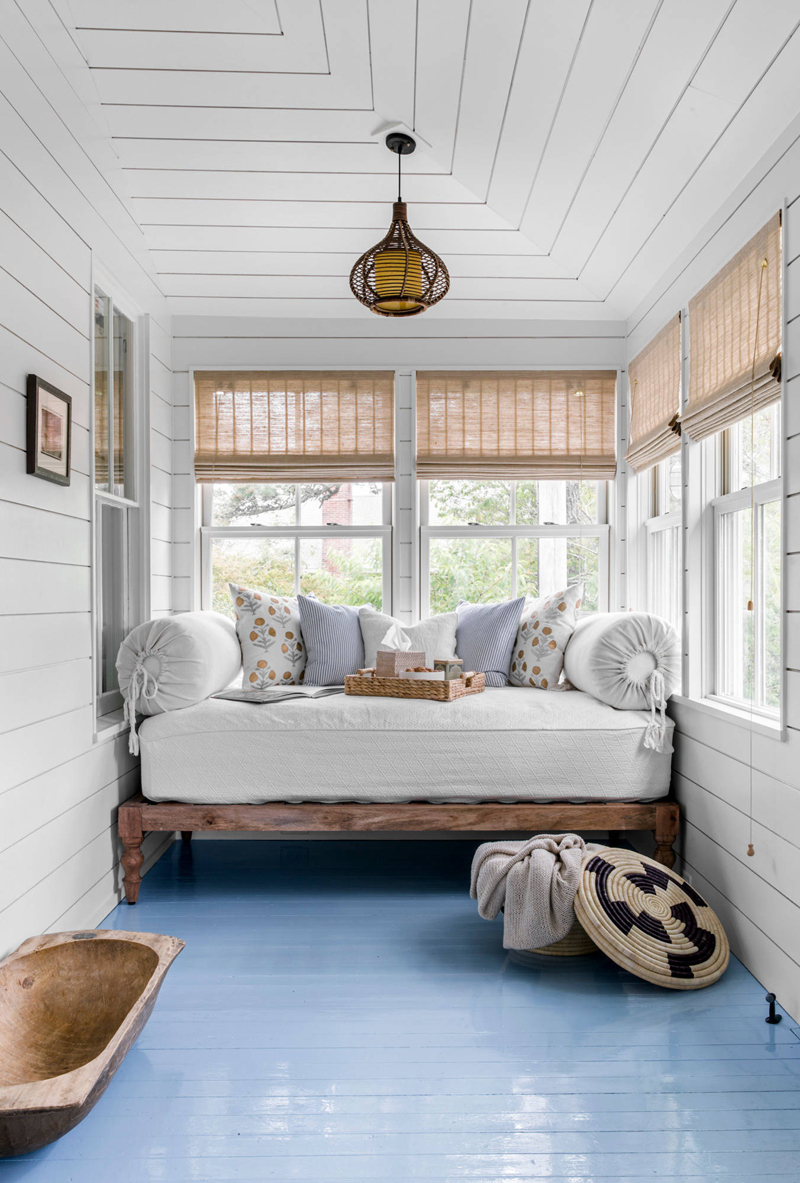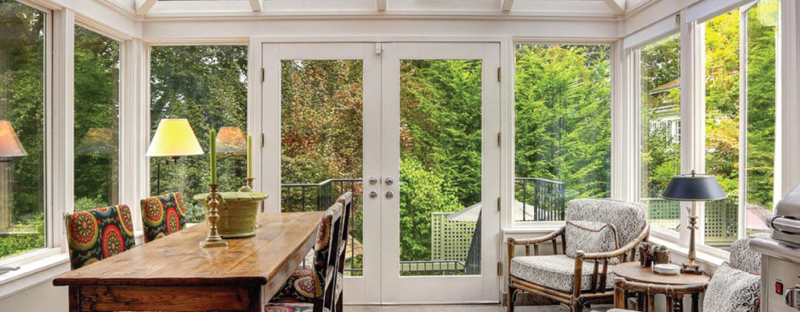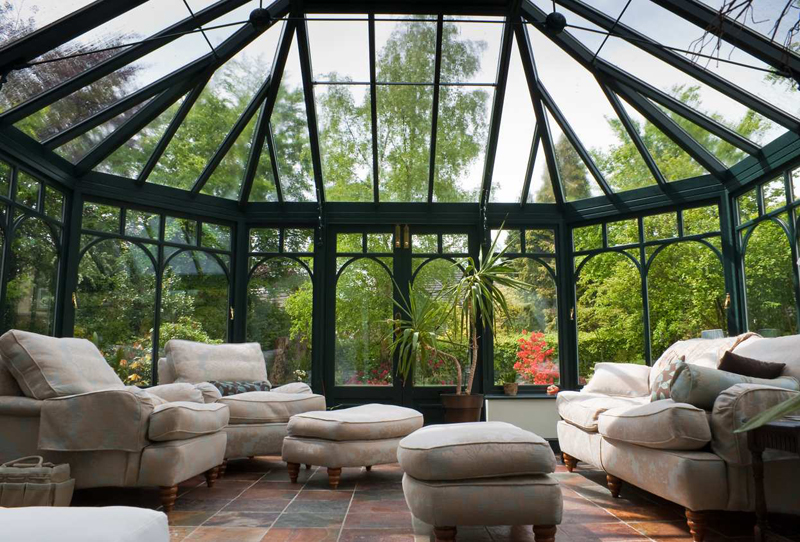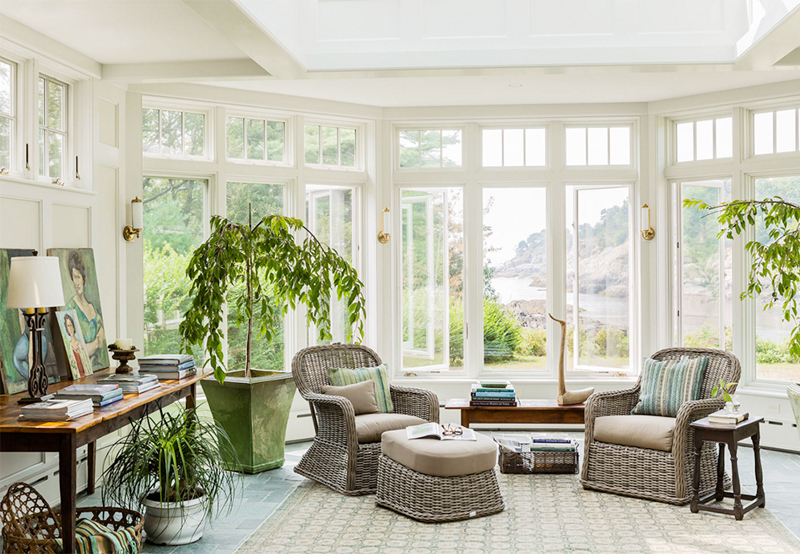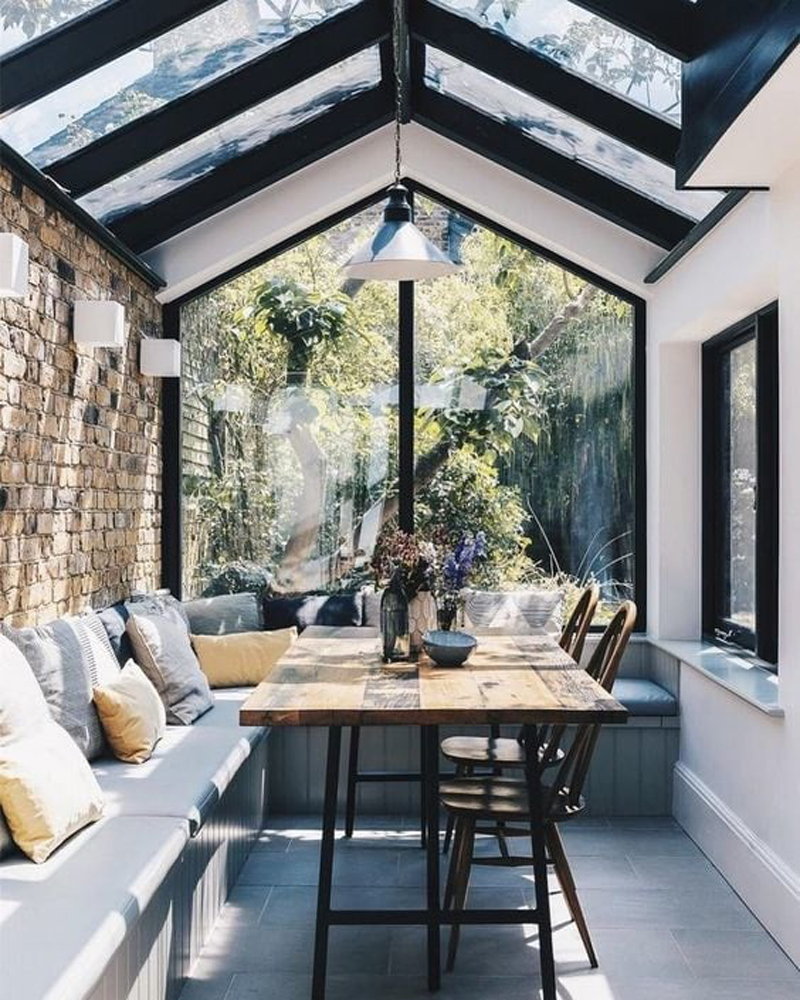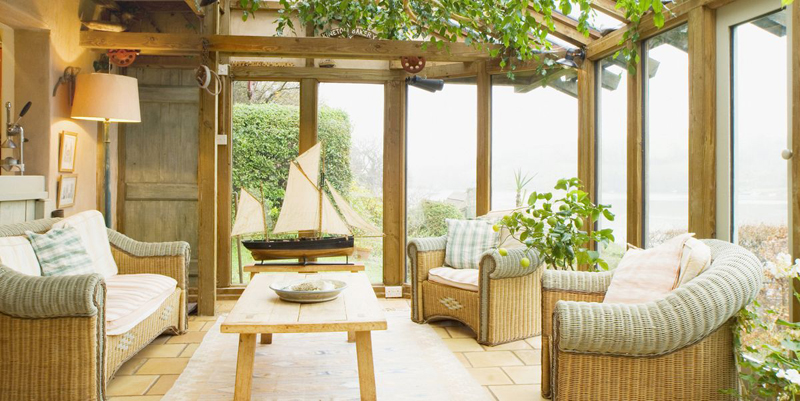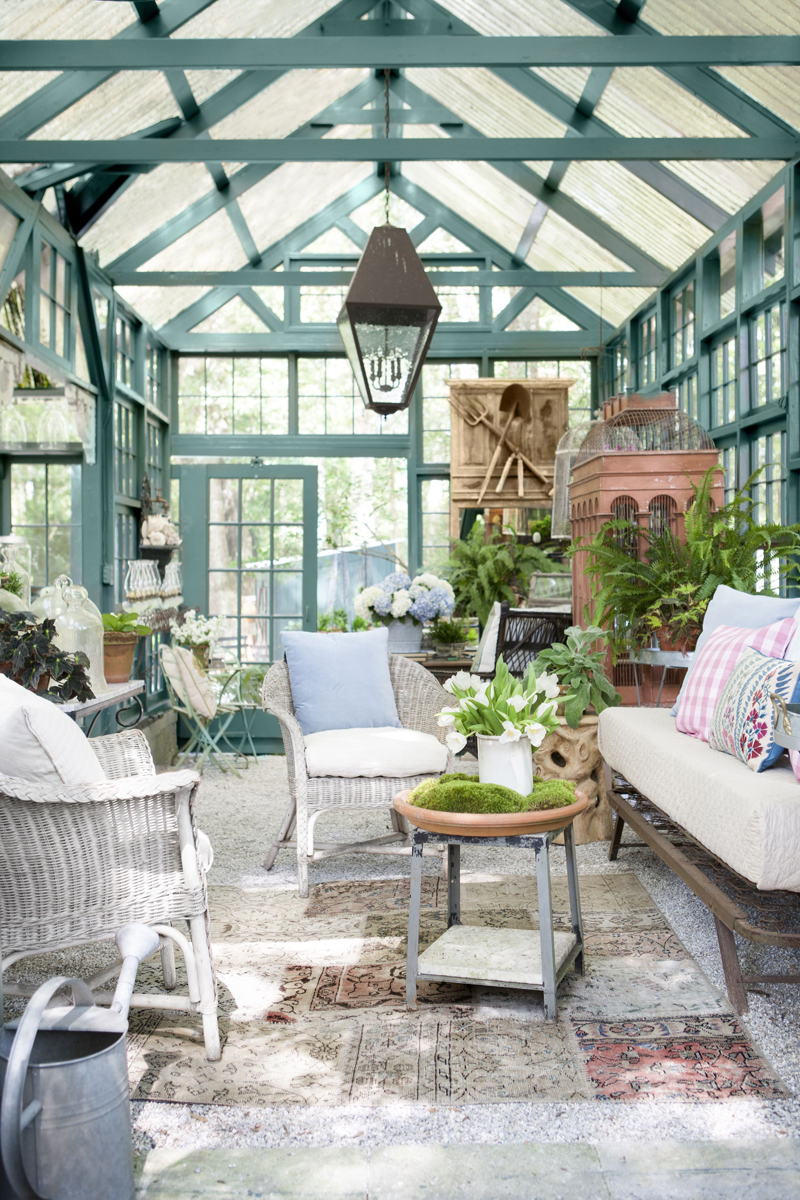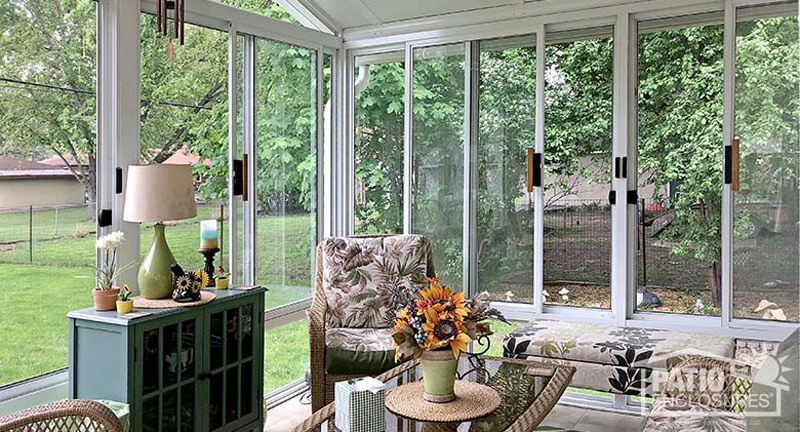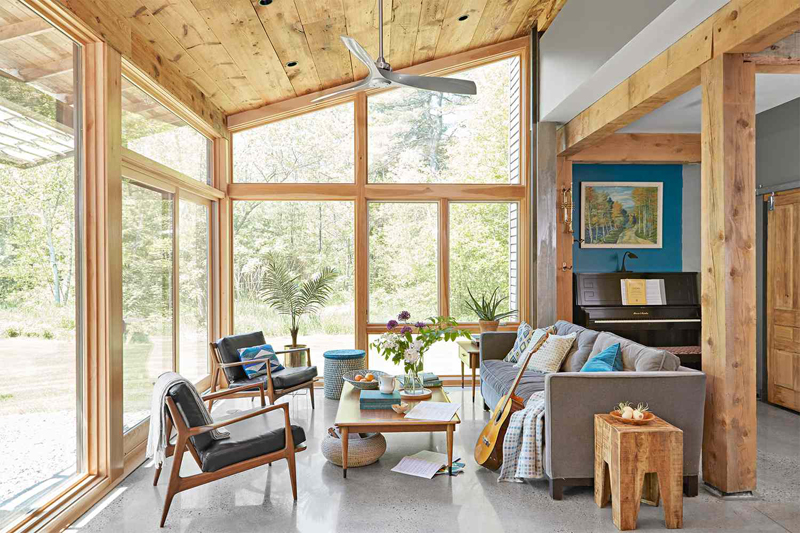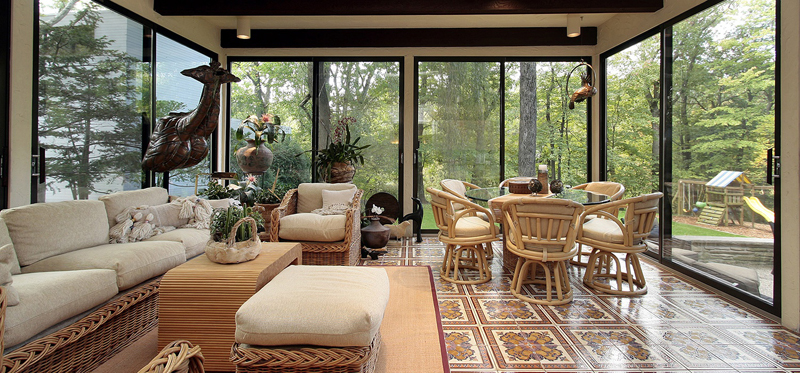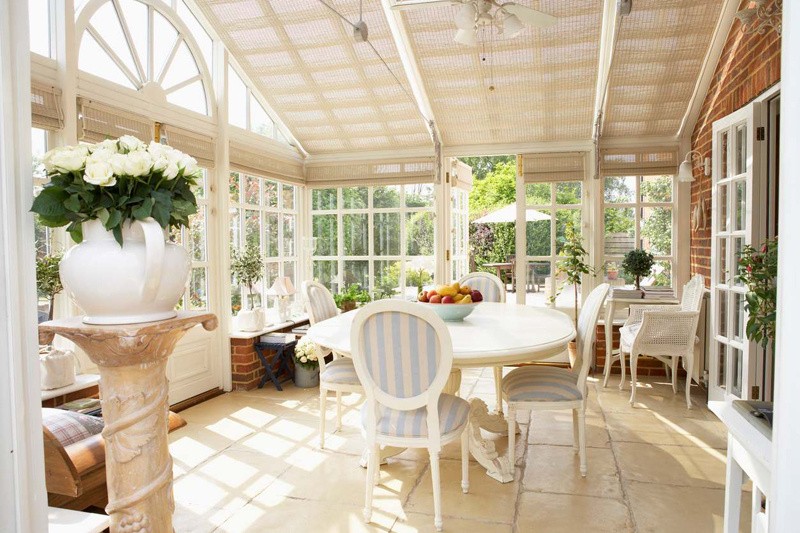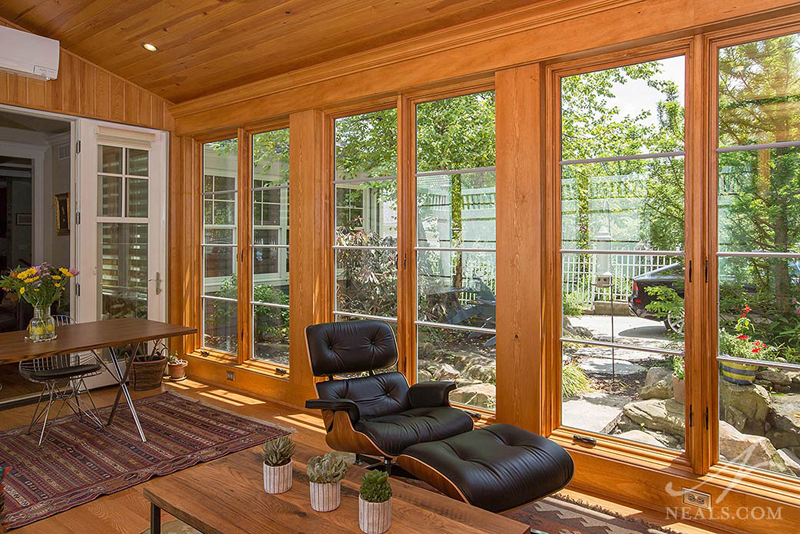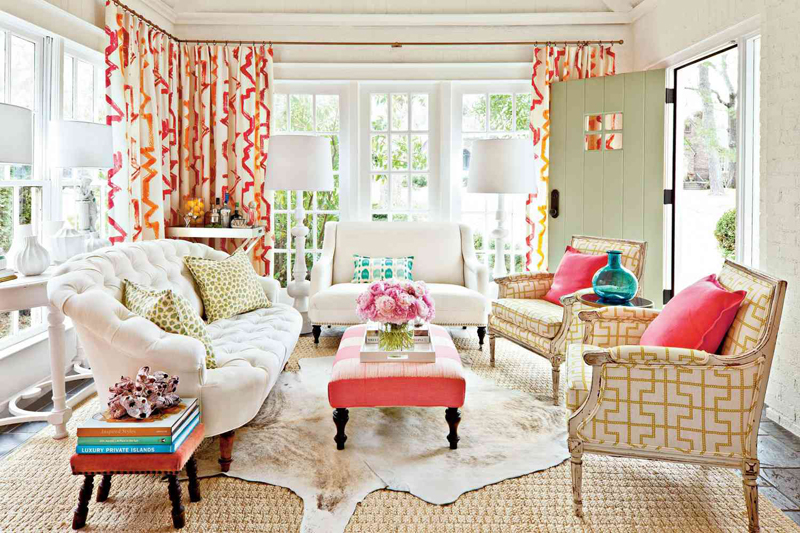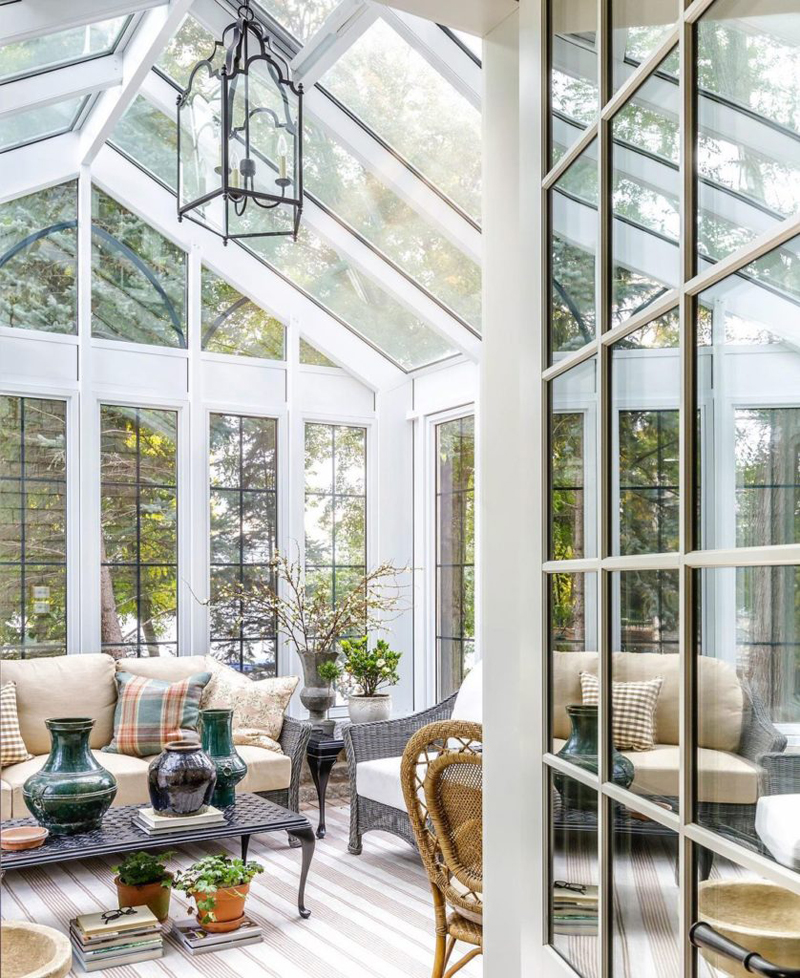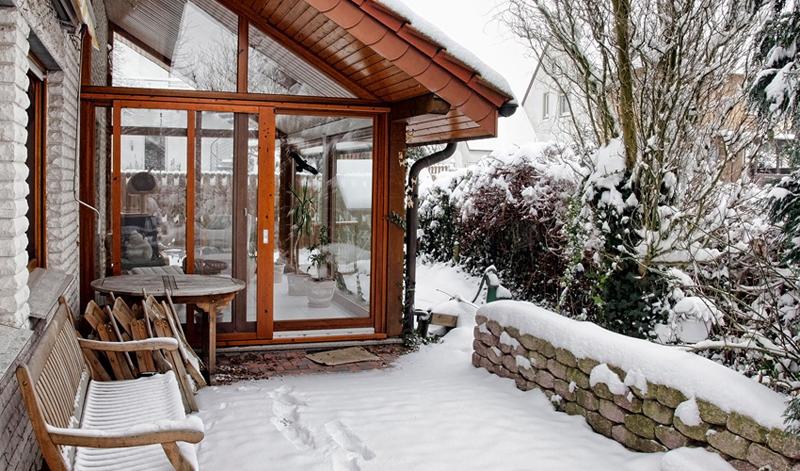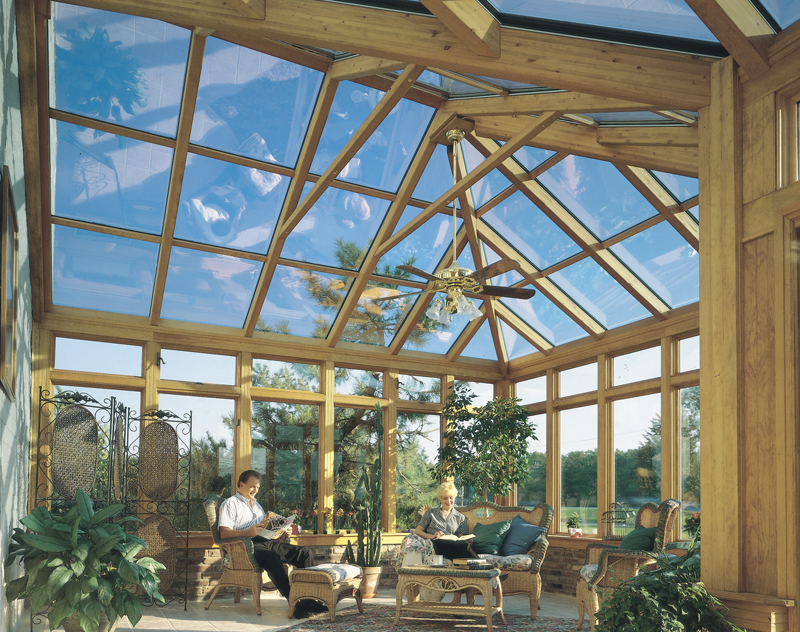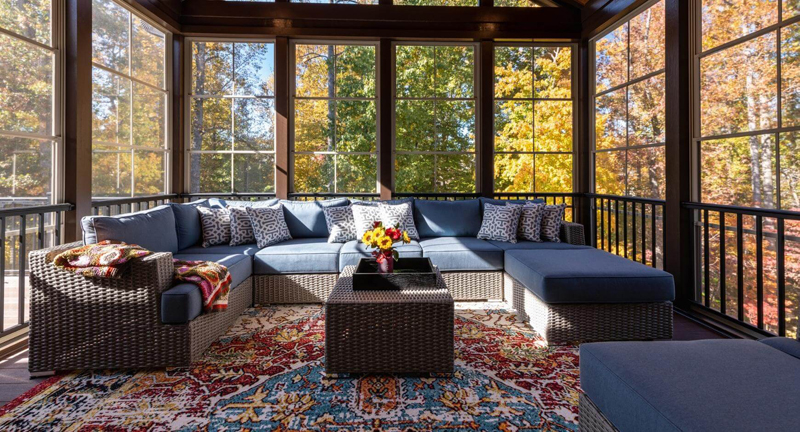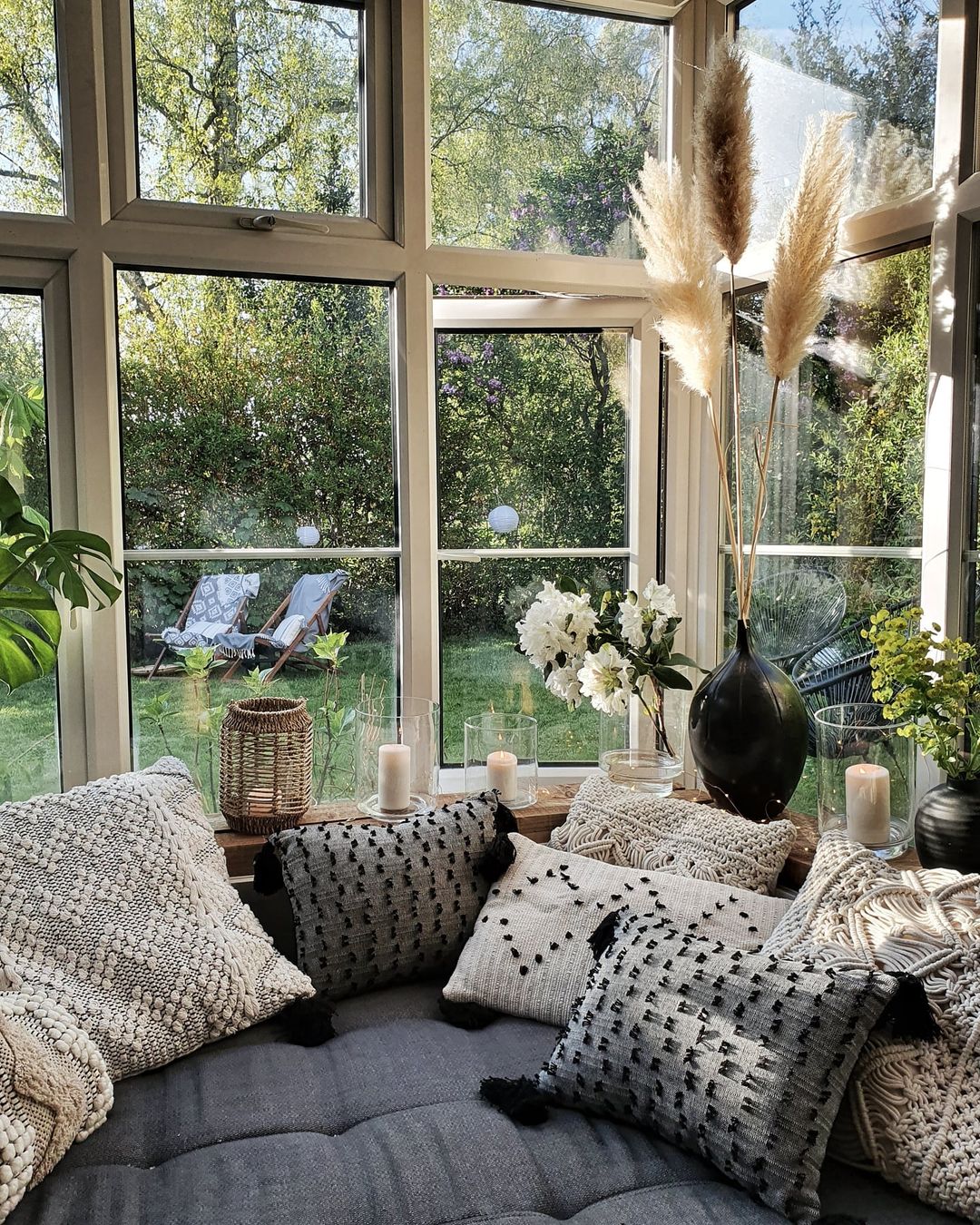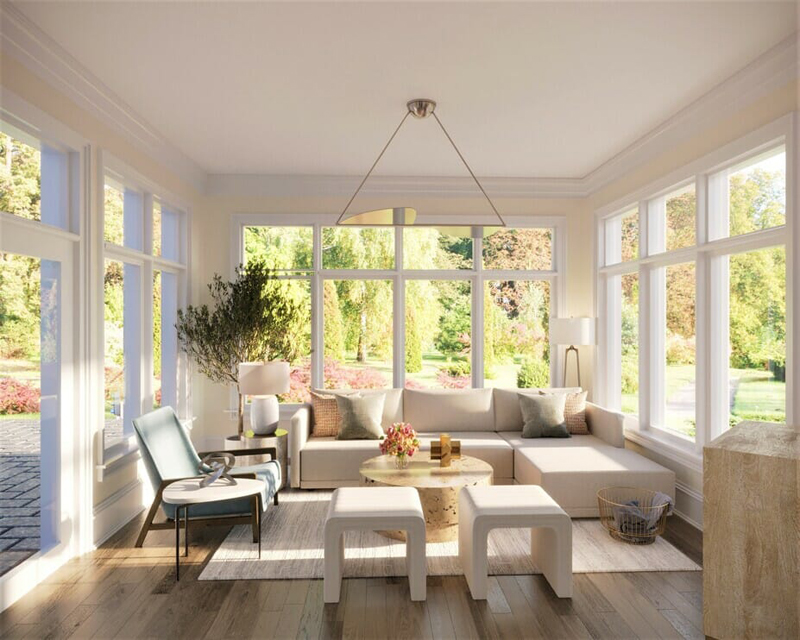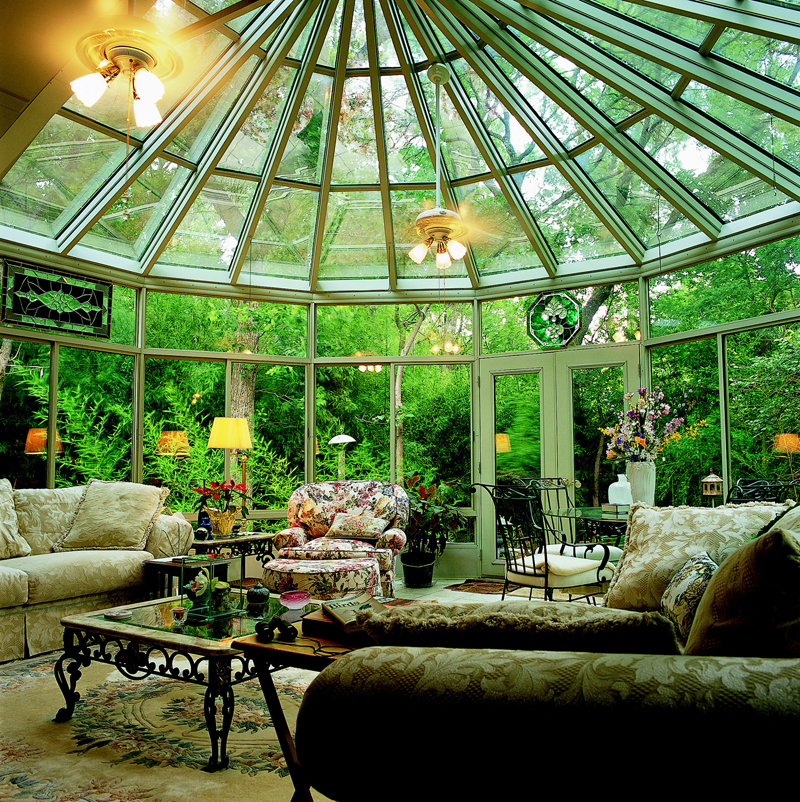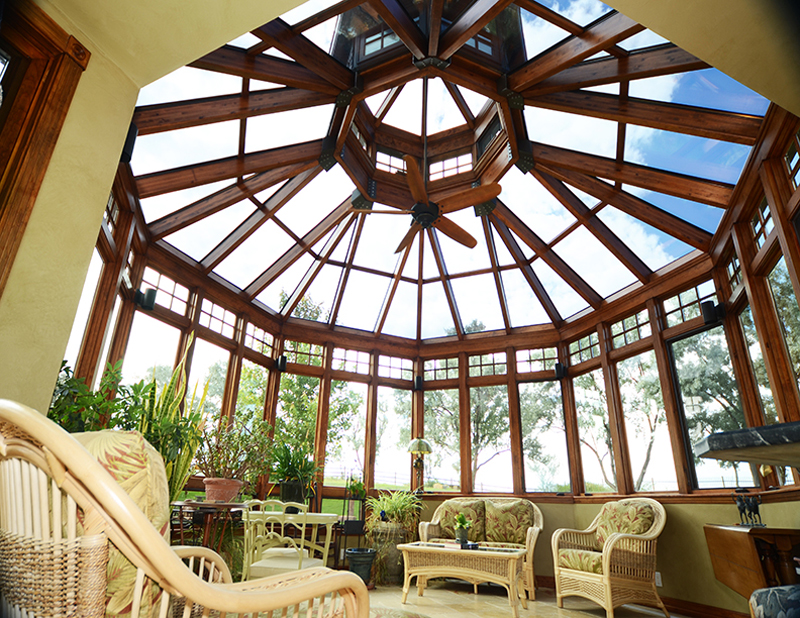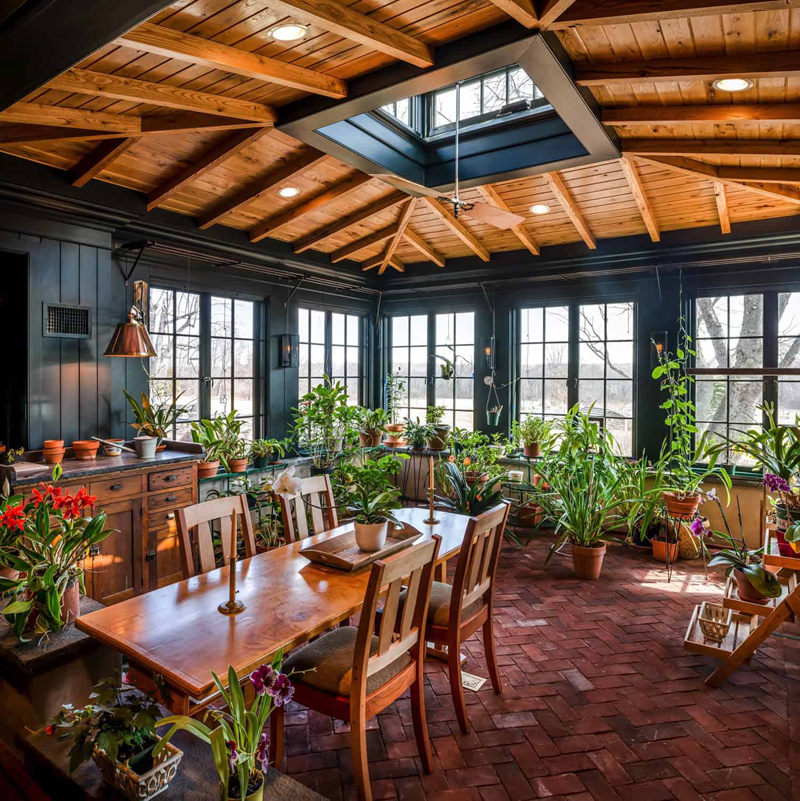A sunroom is a type of room that is designed to allow natural light and warmth into a home. It typically has large windows and skylights to maximize the amount of sunlight that enters the room. Sunrooms are also known as conservatories or solariums.
Sunrooms can be added to existing homes or built as part of new construction. They can be used for a variety of purposes such as a living room, dining room, or even a home office. They can also be used as a space to grow plants, as a playroom for children, or as a space to entertain guests.
Sunrooms are typically made of glass or have a lot of glazing, which allows natural light to enter the space. They can be attached to the main house or be a separate structure, and they can have different types of roofing such as a glass roof, polycarbonate or even a traditional roof with skylights.
Sunrooms are a great way to enjoy the natural beauty of the outdoors while being protected from the elements. They can be a wonderful addition to any home and can increase the value of the property.
Is a sunroom right for your home?
A sunroom can be a great addition to a home, but it is important to consider whether it is the right choice for your specific needs and situation. Here are some factors to consider when determining if a sunroom is right for your home:
Climate: If you live in an area with a mild climate, a sunroom can be a wonderful addition to your home. However, if you live in an area with extreme temperatures, a sunroom may not be the most practical choice.
Space: Do you have enough space on your property to add a sunroom? Will it be an addition or a stand-alone structure?
Budget: Sunrooms can be costly to build, so it’s important to consider if it fits within your budget.
Usage: What will you use the sunroom for? Will it be a living space or a greenhouse? How often will you use the space?
Maintenance: Are you prepared for the ongoing maintenance that a sunroom requires?
Building codes and zoning: It’s important to check with your local building codes and zoning laws to make sure a sunroom is allowed in your area, and if there are any specific requirements that you must follow.
If you determine that a sunroom is right for your home and budget, it can be a great way to enjoy the natural light and warmth of the outdoors while being protected from the elements. It can also increase the value of your home.
How Solariums Perform in Cold Climates
Solariums, also known as sunrooms or conservatories, are designed to allow natural light and warmth into a home. They are typically built with large windows and skylights to maximize the amount of sunlight that enters the room. However, in cold climates, solariums may not provide enough insulation to keep the space warm during the winter months.
Solariums that are not properly insulated may lose heat quickly, making them difficult to heat and keep warm. To combat this, it is important to use high-quality insulated windows and doors, as well as insulate the walls, floors, and ceilings. Additionally, adding a heating system such as electric baseboard heaters or a small furnace, or even an air-conditioning unit can help to keep the space warm during the winter.
Overall, while solariums can provide natural light and warmth in cold climates, they may require additional insulation and heating to be comfortable during the colder months.
Taking Care of Your Sunroom During a Winter Storm
Taking care of your sunroom during a winter storm is essential to ensure that it remains safe and functional. Here are a few steps you can take to prepare your sunroom for a winter storm:
- Inspect the roof and gutters: Before a storm, check the roof and gutters for any damage or debris that could cause leaks or blockages. Clear any debris and make any necessary repairs.
- Seal any gaps or cracks: Check for any gaps or cracks in the walls, windows, and doors and seal them with weatherstripping or caulk to prevent drafts and leaks.
- Insulate: Insulate the walls, floors, and ceilings to keep the sunroom warm during the storm.
- Keep the heat on: Keep your sunroom heated during the storm, even if you’re not using it. This will prevent pipes from freezing and bursting.
- Secure loose items: Bring in any loose items such as furniture or potted plants that could be damaged by wind or snow.
- Have a backup plan for power outages: Make sure you have a backup plan in case of a power outage, such as a generator or battery-powered lights.
- Check the weather: Keep an eye on the forecast and any storm warnings. If a severe storm is expected, it may be best to stay indoors and avoid using the sunroom until it passes.
By taking these steps, you can help protect your sunroom during a winter storm and keep it functional and safe throughout the winter.
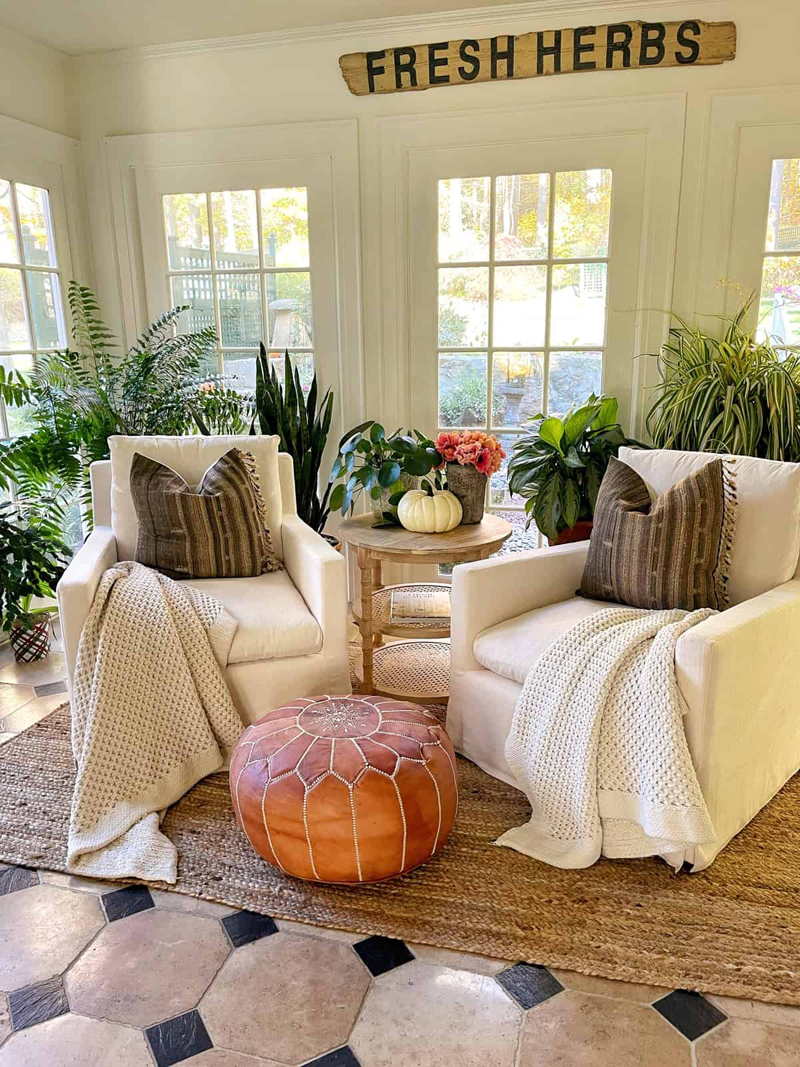
Keeping Your Sunroom Warm in the Winter Months
Keeping your sunroom warm in the winter months can be a challenge, but there are several ways to do so:
- Insulation: Insulating the walls, floors, and ceilings of the sunroom can help to keep the heat inside and prevent drafts. This can be done by using insulation materials such as fiberglass or spray foam, or by adding insulated window treatments.
- Heating: Adding a heating system such as electric baseboard heaters, a small furnace, or a heat pump can help to keep the sunroom warm. It’s important to choose a heating system that is appropriate for the size of the sunroom and the climate.
- Weatherstripping: Applying weatherstripping around windows and doors can help to seal drafts and keep the heat inside. This can be done with products such as door sweeps or door seals.
- Window Coverings: Closing curtains, shades, or blinds on the windows during the night can help to keep the sunroom warm by trapping heat inside.
- Maintaining your windows: Make sure your windows are in good condition, ensuring that they seal well and are not leaking air. If the windows are old, consider replacing them with energy-efficient windows.
- Passive solar gain: Allow sunlight to enter the sunroom during the day, which can help to heat the space. During the night, close the curtains or shades to trap the heat inside.
By taking these steps, you can help to keep your sunroom warm in the winter months and make it a comfortable and usable space throughout the year.
Sunroom Ventilation System
A sunroom ventilation system is an important aspect of maintaining a comfortable and healthy environment in the sunroom. It helps to control the temperature and humidity levels, as well as to remove any unwanted odors or pollutants.
Natural ventilation: This can be achieved through the use of windows and skylights that can be opened to allow fresh air to circulate.
Mechanical ventilation: This can be achieved through the use of an HVAC system that includes an exhaust fan and an intake vent. This system can be controlled by a thermostat and can be set to run on a schedule.
Whole-house ventilation: This is a system that connects the sunroom to the main HVAC system, allowing the sunroom to be ventilated and heated/cooled along with the rest of the house.
Heat Recovery Ventilation (HRV): This is an advanced system that uses a heat exchanger to transfer heat from the exhaust air to the incoming fresh air. This helps to improve energy efficiency and reduce heating costs.
Dehumidifiers: During the summer, the sunroom can become quite humid, which can be uncomfortable and cause mold and mildew growth. A dehumidifier can help to remove excess moisture from the air, making the sunroom more comfortable.
A well-designed ventilation system helps to ensure that the sunroom is a comfortable and healthy space to spend time in, and it also helps to prolong the life of the building and the furniture inside it.
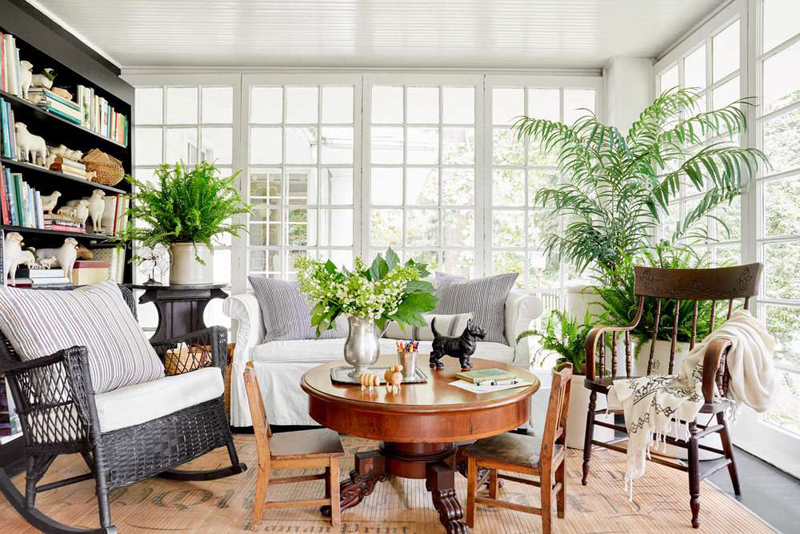
10 Stunning Sunroom Tips to Lighten Up Your Home
- Use natural light: Make the most of the natural light in your sunroom by using large windows and skylights. Consider using reflective surfaces such as mirrors to bounce light around the room.
- Incorporate greenery: Add plants to your sunroom to bring a touch of nature into your home and improve air quality.
- Use light-colored paint: Choose light-colored paint for your sunroom walls to reflect light and make the space feel brighter and more open.
- Add a fireplace: A fireplace can add warmth and ambiance to your sunroom, making it a cozy place to relax even on chilly days.
- Use glass walls: Glass walls can create a seamless transition between your sunroom and the outdoors, making the space feel even more open and airy.
- Add a ceiling fan: A ceiling fan can help to circulate air and keep the sunroom comfortable, even on hot summer days.
- Incorporate a water feature: A water feature such as a small fountain or pond can add a soothing element to your sunroom and create a serene atmosphere.
- Use natural materials: Incorporate natural materials such as wood, stone, and wicker into your sunroom decor to create a warm and inviting space.
- Add a sunroom to an existing room: Adding a sunroom to an existing room such as a living room or bedroom can create a bright and inviting space with a view to the outside.
- Use lighting effectively: Use lighting to create different moods in your sunroom. Add table lamps, floor lamps and even string lights to create a warm and inviting atmosphere.
- By following these tips, you can create a stunning sunroom that is both beautiful and functional, and that will lighten up your home and make it a more enjoyable place to be.
How to Reduce Heat in Your Sunroom
- Reducing the heat in your sunroom can be a challenge during the summer months, but there are several things you can do to keep the space comfortable:
- Use shading: Use shading devices such as shades, curtains, or blinds to block direct sunlight and reduce heat gain.
- Use reflective film: Apply reflective film to the windows to reduce the amount of heat that enters the sunroom.
- Use Insulation: Insulating the walls, floors and ceiling of the sunroom can help to keep the heat out and reduce cooling costs.
- Use a ceiling fan: A ceiling fan can help to circulate air and keep the sunroom comfortable, even on hot summer days.
- Use natural ventilation: Open windows and skylights to allow fresh air to circulate and vent hot air out of the sunroom.
- Use a portable air conditioner: If your sunroom does not have a central air conditioning, use a portable air conditioner to cool the space.
- Use a sunroom specific air conditioning unit: Some sunroom specific air conditioning units are designed to be installed in sunroom and can be more efficient than portable units.
- Use a dehumidifier: A dehumidifier can help to remove excess moisture from the air, making the sunroom more comfortable on hot and humid days.
By following these tips, you can reduce the heat in your sunroom and make it a comfortable and enjoyable space during the summer months.
